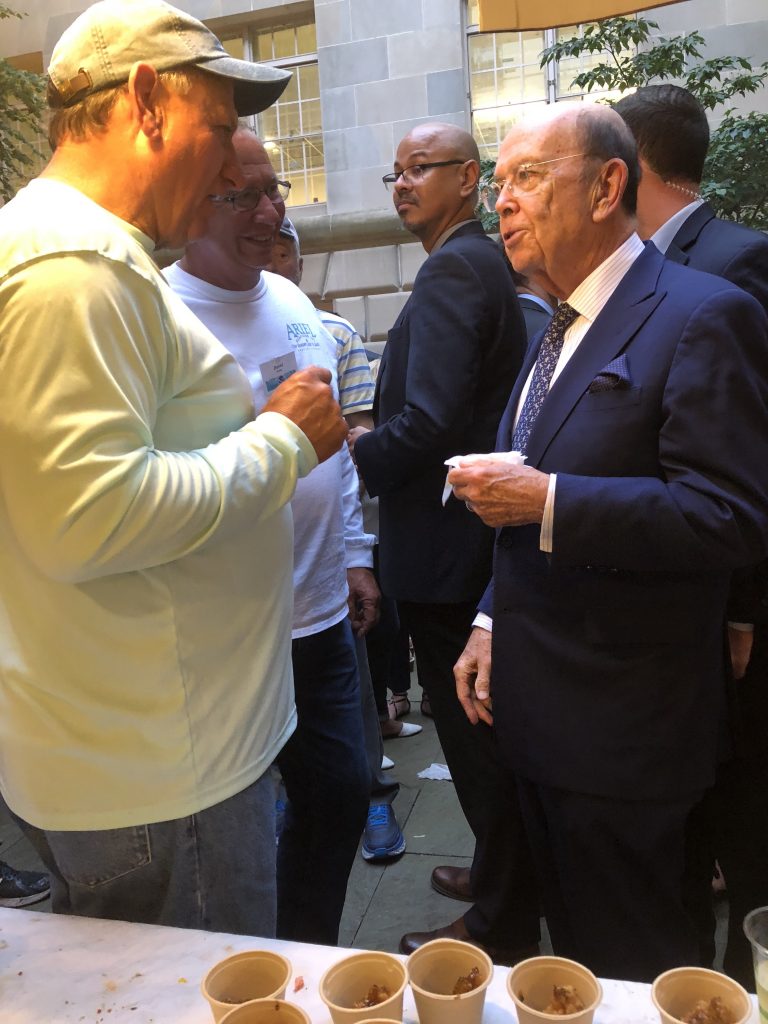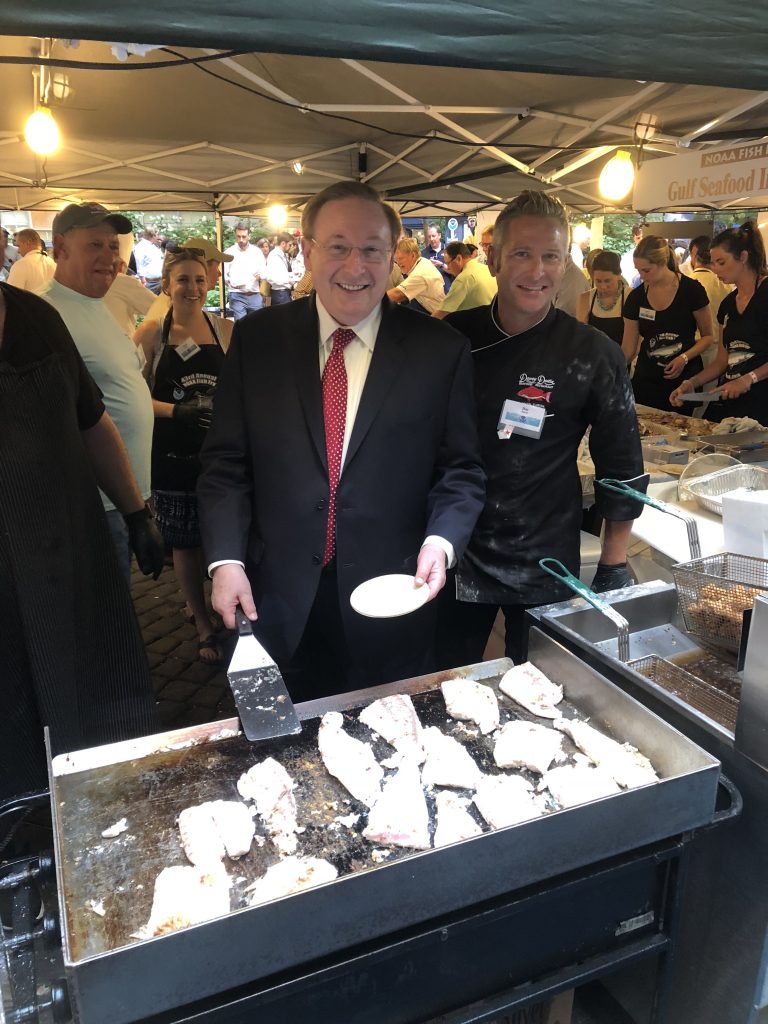September 4, 2018 — In a Centennial Hall listening session, Alaskans raised concerns about federal plans to boost open-ocean fish farms under a new strategic plan for the U.S. Department of Commerce.
On Friday afternoon, Tim Gallaudet, acting undersecretary of commerce for oceans and atmosphere, hosted a listening session at the end of a weeklong gathering of National Oceanic and Atmospheric Administration experts in Juneau.
NOAA is an agency of the Department of Commerce, and Gallaudet is among the figures hosting meetings across the country as part of the process that creates the strategic plan.
In a speech opening the listening session, Gallaudet said the strategic plan is an “initiative to grow the American ‘blue economy.’”
That phrase is used as an umbrella term that includes fisheries, oceanic tourism and other aspects of the national economy that relate to the oceans.
Gallaudet echoed the familiar refrains of the Trump Administration, saying the department is interested in deregulation and “reducing the seafood trade deficit.”
President Donald Trump’s trade war with China has resulted in Chinese tariffs on Alaska seafood exported to that country, and American tariffs on processed Alaska seafood products imported from China.



